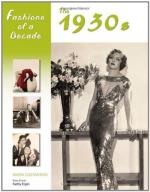|
This section contains 102 words (approx. 1 page at 300 words per page) |

|
The Little Steel strike and the San Francisco longshoremen's strike were both brutally violent and typify the relations between big business and the worker in the 1930s. Both strikes pitted aggressive union leaders against powerful company officials and featured intervention by the Roosevelt administration. Ultimately, after much bloodshed and violence, the strikes were successful in that the worker greatly benefited from union representation.
Sources:
Irving Bernstein, Turbulent Years: A History of the American Worker, 1933-1941 (Boston: Houghton, Mifflin, 1970);
Charles P. Larrowe, Harry Bridges: The Rise and Fall of Radical Labor in the United States (New York: Hill, 1972).
|
This section contains 102 words (approx. 1 page at 300 words per page) |

|




